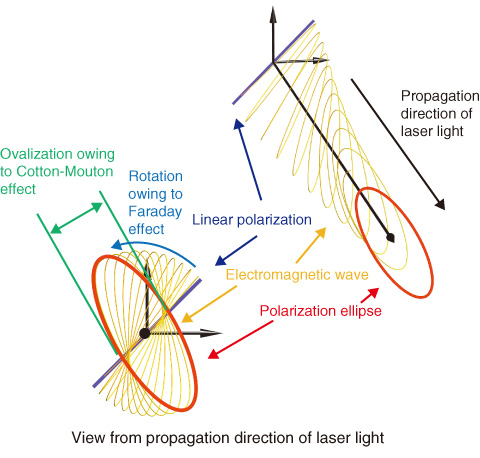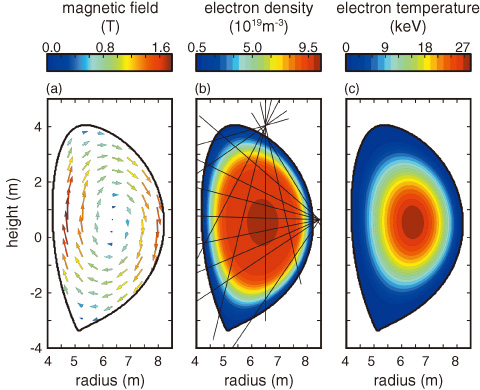
Fig.4-2 Change in polarization state during propagation of laser light in plasma

Fig.4-3 Reconstruction of laser polarimetry measurement data
It is well known that information about the magnetic field structure in a plasma is essential for steady-state and high-performance operation of tokamak devices. Laser polarimetry is a method of measuring the magnetic field in the plasma. The change in the polarization state of laser light propagated in the plasma depends on the magnetic field and electron density. The magnetic field profile can be reconstructed from the laser polarimetry measurement data and the information on the electron density provided by other diagnostics. When the electron density and temperature are high (e.g., in burning plasma), the change in the polarization state becomes complicated. Therefore, it has been a concern that laser polarimetry will not be applicable to magnetic field measurement in a future reactor.
The change in the polarization state approximates the superposition of the two fundamental processes, the Faraday effect and the Cotton-Mouton effect (Fig.4-2). In plasma with a high electron temperature, the Faraday effect is degraded, whereas the Cotton-Mouton effect is enhanced. Laser polarimetry is typically used when the Cotton-Mouton effect is small, and only the Faraday effect is measured. However, this study proposes laser polarimetry using long wavelengths to obtain a large Cotton-Mouton effect and proposes the reconstruction of the electron temperature from the measurement data for the Faraday and Cotton-Mouton effects. It is reasonably expected that such reconstruction is possible by using the different dependences of both effects on the electron temperature.
The above expectation was tested under the conditions of the ITER poloidal polarimeter. Using the measurement data from the polarimeter and information on the location of the plasma boundary, the simultaneous reconstruction of the magnetic field, electron density, and electron temperature was successfully demonstrated. Fig.4-3 shows the reconstruction results. These results not only show that magnetic field measurement is possible in the case of a complicated change in the polarization state, but also pioneer a new application of laser polarimetry to electron density measurement.
Existing fusion experimental devices use many diagnostics. However, a future reactor needs to be operated with fewer diagnostics. This study suggests that multi-parameter measurement using laser polarimetry shows promise for future reactors.
<Previous: 4 Nuclear Fusion Research and Development | Next: 4-2 >